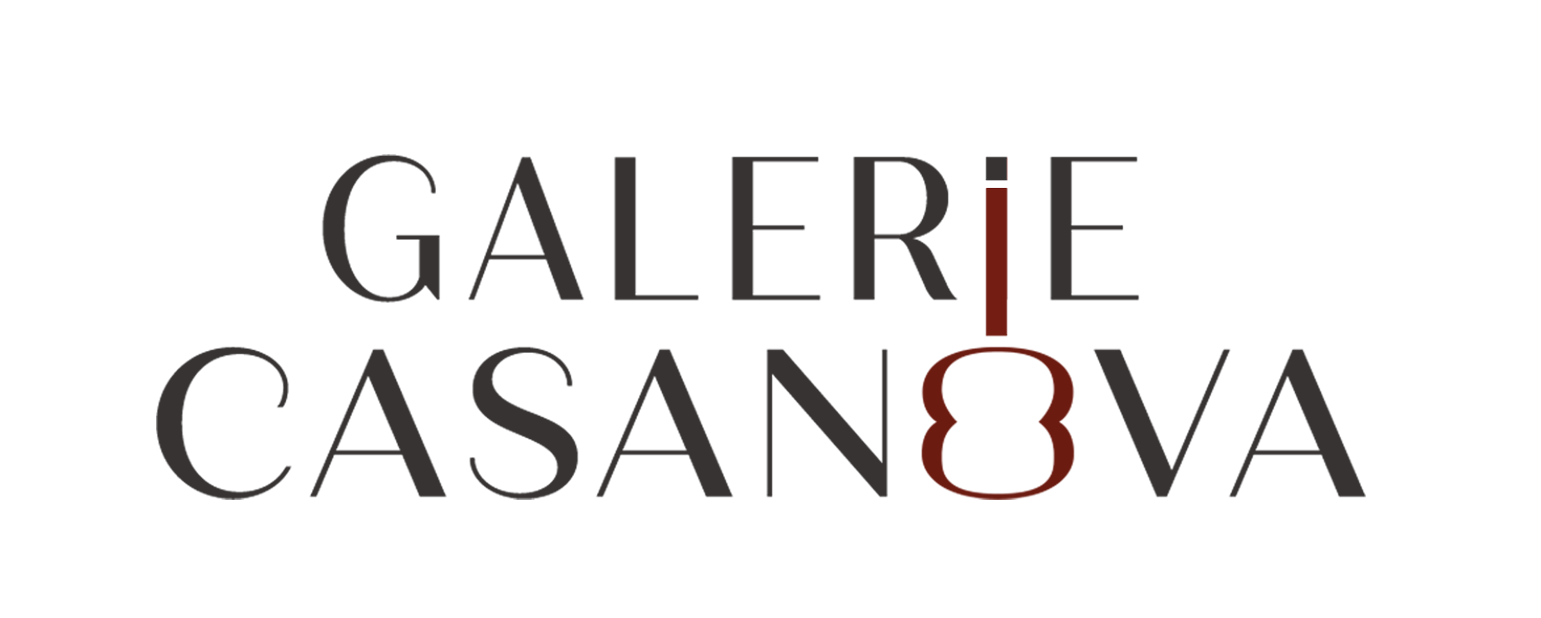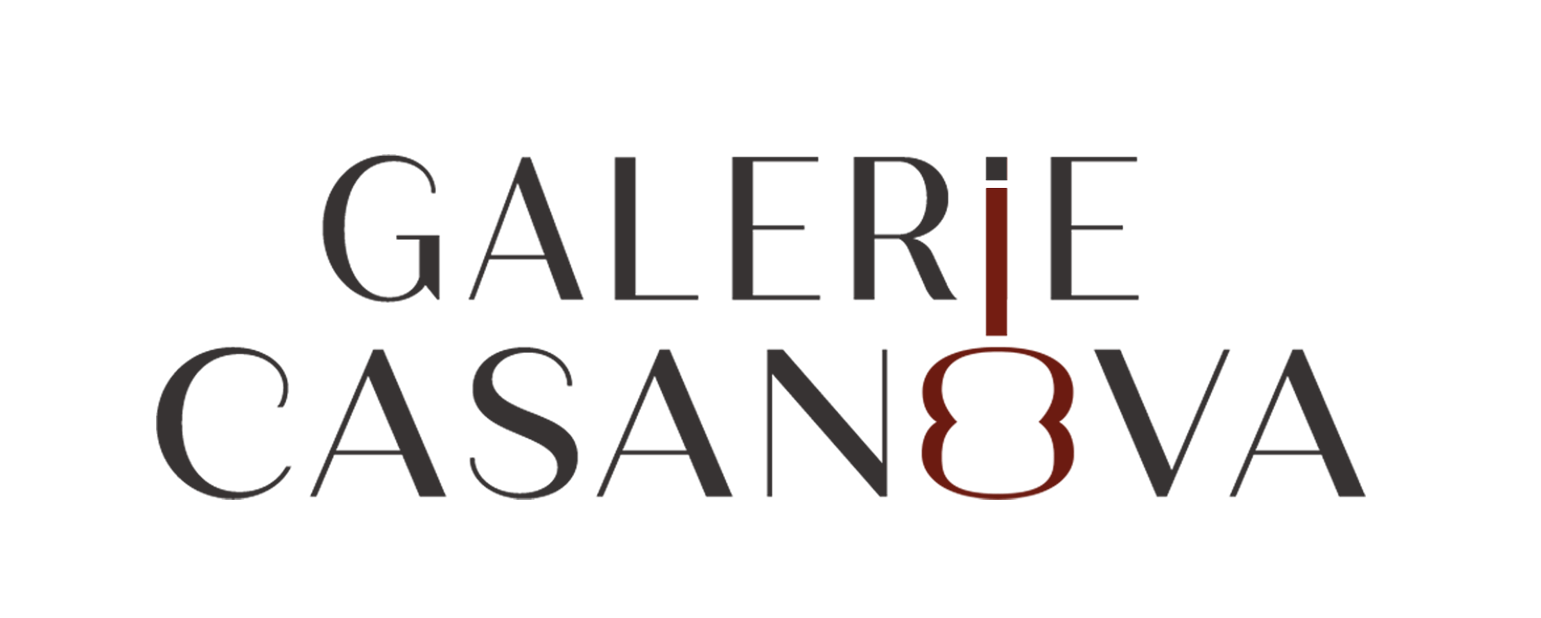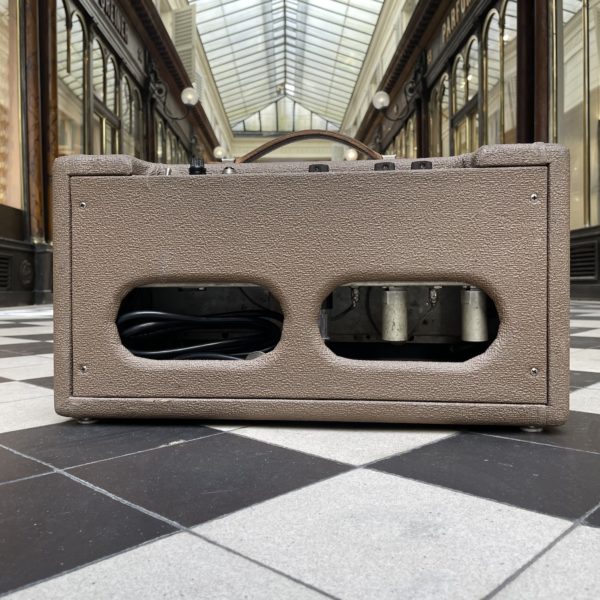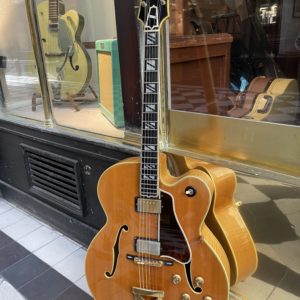1962 FENDER REVERB UNIT 6G15
The prices indicated correspond to the price in the case of payment in-store or by bank transfer. In the case of payment by credit card via the website, a processing fee of [3.25% + €0.25]* will be applied to the total amount of the basket, including delivery costs.
Additional information
Stunning example of a Fender Reverb Unit 6G15 tube reverb from 1962, remarkably preserved and perfect working condition.
Nowadays, the use of effects to transform the sound of our instruments is perfectly ubiquitous as there are a myriad of options resulting from evolution which has allowed an ever greater miniaturization of electronic components accompanied by a tenfold increase in their performance – it is in fact commonplace to come across pedals contained in boxes measuring 12 by 6 centimeters and capable all at once of coloring, distorting, modulating and giving ambiance to the sound of a guitar connected to it. The keyword at the origin of this technological tour de force is very simple: transistor.
However, this point was much less obvious in the 1950s and early 1960s, the transistor having been conceptualized at the end of the Second World War but its generalization being briefly hampered by the difficulties encountered in mass producing a component sufficiently efficient and reliable to meet the needs of products intended for mass consumption. In fact, the market was largely dominated by another component: the electronic vacuum tube. This point is particularly obvious to any fan of vintage amplifiers, since all devices produced between the 1930s and the mid-1960s are equipped with them. Fragile, requiring high voltages and bulky transformers to function, it is nevertheless these components which marked the landscape of the first golden age of amplified music and made the color in the sound of all the period recordings to which our ears are accustomed.
Among the characteristic elements of this golden age, we cannot not mention the emergence of effects: from the manipulation of magnetic tapes to obtain the first artificial echoes to the development of the first plate reverbs in Germany, we ultimately arrive at an innovative design brought about by Hammond: the spring reverb, using springs in which audio signals are induced, creating a simulation of reverberation. Hammond has been using this system in its electric organs for several decades now, but in 1959 introduced a compact module allowing recording studios to have this much-desired effect, but above all to equip guitar amplifiers directly with it.
For Fender, the hurdle was passed in 1963 with the introduction of the Fender Vibroverb, the first amplifier made in Fullerton with an onboard reverb. However, 2 years previously another device appeared: aptly named Fender Reverb Unit 6G15, it is an standalone box placed between the guitar and the amplifier – a prefiguration of modern effects pedals! The device would be a real success, since it will be the touchstone of the sound of rock of the 60s, particularly surf-rock, and the inspiration of a slew of emulators: among others, the Vox Reverberation Unit heard in the music of the Shadows, the Grampian Type 636 which will be synonymous with the sound of reggae and dub by the end of the decade…
The circuit of the 6G15 is relatively rudimentary, composed of only three tubes: a double-triode 12AT7 for pre-amplification, a 6K6GT to drive the reverb springs, and a double-triode 12AX7, half of which is used to recover the level of spring tank output and the other to buffer the dry audio signal coming from the effect input. There are three controls: Dwell, allowing you to adjust the duration of the reverb effect, Mixer allowing you to match the levels of the wet and dry signals, and Tone, allowing you to reduce the high frequency content of the dry signal.
The example presented here comes from the very beginning of the second year of production, stamped in January 1962. We find it in the first aesthetic iteration of the model with the flat Fender nameplate screwed on the front, a brown Tolex cover and the front panel featuring a wheat-colored grill cloth ( following the nomenclature of Teagle & Sprung). It is in exceptionally well preserved original condition, including its original transformers, potentiometers, spring tank, hardware and screws exactly as it was the day it left the assembly line – even the bracket used to lock the spring tank during transportation is still present! We worked hard to restore this reverb, performing the necessary replacement of the original power cord with a modern cord with chassis grounding and expired electrolytic capacitors, verifying the proper working condition of all passive components and tubes – these operations, necessary to secure the device and ensure its optimal operation, have been carried out with the aim of preserving its entire original appearance. Now all that’s left to do is to grab a good old Strat or Jaguar and bang out your favorites tunes, from Dick Dale to the Lively Ones and, our personal favorites, the Trashmen!
110 volt operation, sold with a 220V power transformer. Tube set: 1960s Sylvania 6K6GT, modern no-brand 12AT7, modern Sovtek 12AX7.
SOLD























